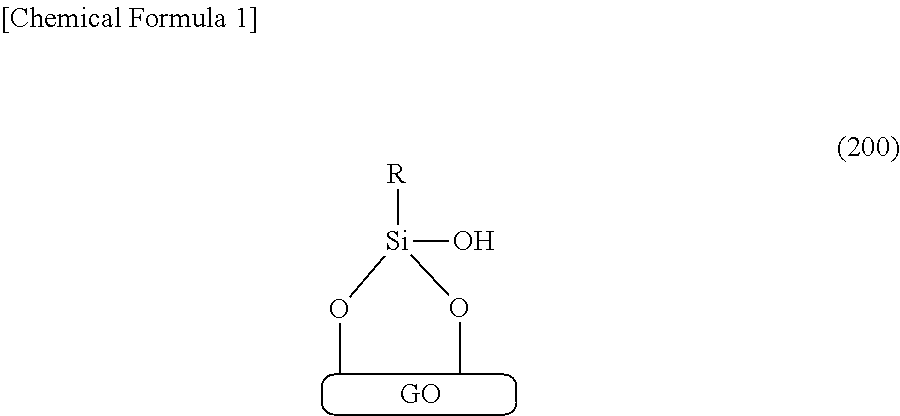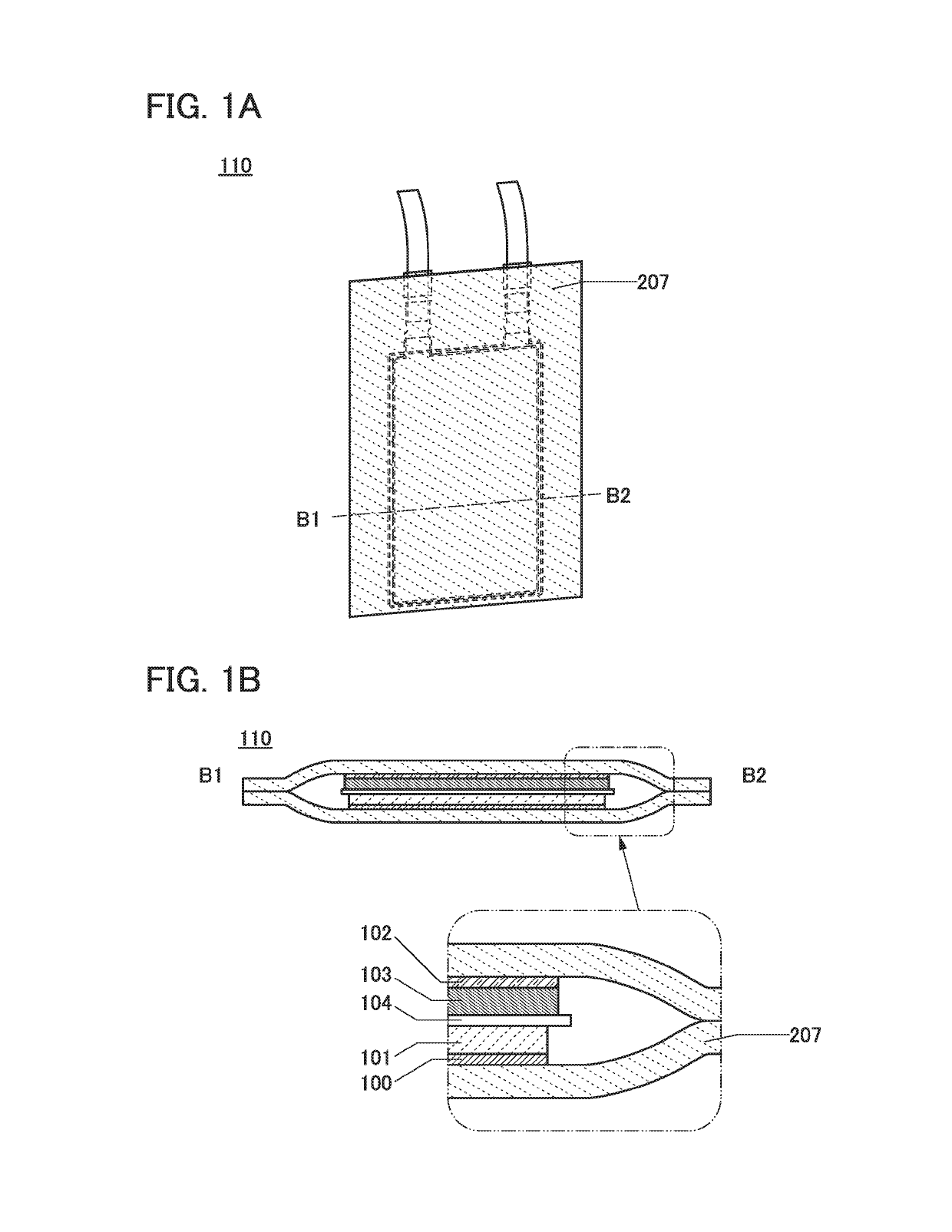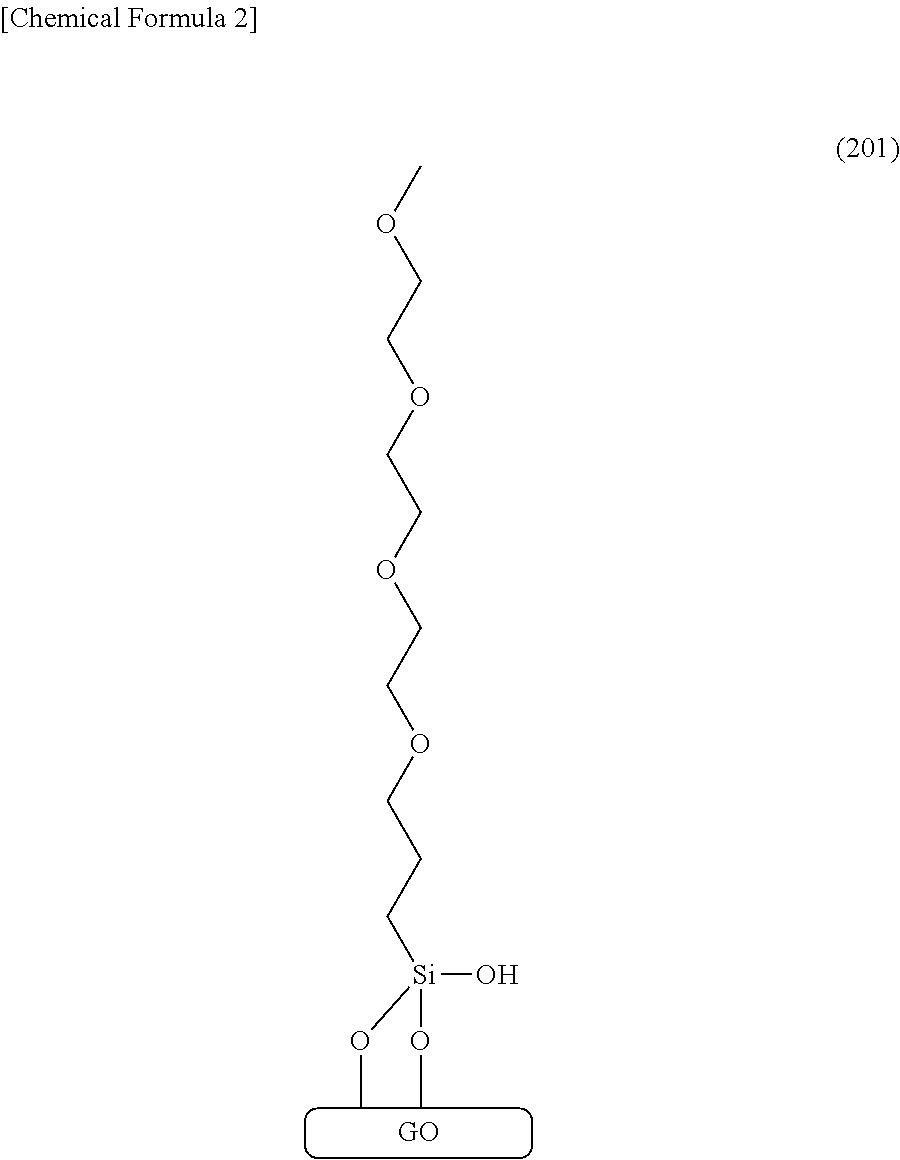Graphene compound, method for forming graphene compound, and lithium-ion storage battery
a graphene compound and lithium-ion storage battery technology, applied in the field of graphene compounds, can solve the problems of ceramic solid electrolyte not being suitable for flexible solid storage batteries, ceramic solid electrolyte not very suitable for ceramic solid electrolyte, etc., to achieve low electron conductivity, prevent short circuit, and high conductivity
- Summary
- Abstract
- Description
- Claims
- Application Information
AI Technical Summary
Benefits of technology
Problems solved by technology
Method used
Image
Examples
embodiment 1
(Embodiment 1)
[0046]In this embodiment, a graphene compound formed according to one embodiment of the present invention is described. In addition, a method for forming a graphene compound by chemical modification is described. The graphene compound formed according to one embodiment of the present invention has a function of conducting metal ions such as lithium, sodium, magnesium, and calcium and thus can be used for a solid electrolyte of a lithium-ion storage battery, for example. However, one embodiment of the present invention is not limited thereto.
[0047]First, graphene and a graphene compound are described.
[0048]Graphene is a one-atom-thick sheet of carbon atoms arranged in a hexagonal lattice structure on a plane. Bonds between carbon atoms in graphene are stronger than those in diamond; thus, graphene has extremely high resistance to deformation and pulling. However, graphene has extremely high conductivity and is not sufficiently permeable to lithium ions; thus, graphene b...
specific example
[0077]Here, examples of the silylating agent that has a chain group having two or more ether bonds are shown below. With the use of any of such silylating agents, a graphene compound chemically modified with a chain group having ether bonds can be formed.
[0078]
[0079]In formulae (137) to (148), OMe represents a methoxy group and OEt represents an ethoxy group. With the use of any of the above silylating agents, the graphene compound that has a chain group having at least two ether bonds can be formed. The graphene compound chemically modified with any of these silylating agents has low electron conductivity and high lithium ion conductivity and thus is suitably used for a solid electrolyte or a separator of a lithium-ion storage battery. Note that the graphene compound of one embodiment of the present invention may be formed without using any of the above-described silylating agents.
[0080]In Embodiment 1, one embodiment of the present invention has been described. Other embodiments o...
embodiment 2
(Embodiment 2)
[0082]In this embodiment, a structure of a lithium-ion storage battery including the graphene compound of one embodiment of the present invention is described.
[0083]A method for forming a lithium-ion storage battery 110 of one embodiment of the present invention is described below with reference to FIGS. 1A and 1B. FIG. 1B is a cross-sectional view of the lithium-ion storage battery 110. In the schematic cross-sectional view, a positive electrode current collector 100, a positive electrode active material layer 101, a solid electrolyte layer 104, a negative electrode active material layer 103, and a negative electrode current collector 102 are stacked and enclosed by an exterior body 207. Note that the active material layers can be formed on both surfaces of the current collector, and the storage battery can have a stacked-layer structure.
>
[0084]A positive electrode is described. The positive electrode includes the positive electrode active material layer 101 and the p...
PUM
| Property | Measurement | Unit |
|---|---|---|
| length | aaaaa | aaaaa |
| melting point | aaaaa | aaaaa |
| length | aaaaa | aaaaa |
Abstract
Description
Claims
Application Information
 Login to View More
Login to View More - R&D
- Intellectual Property
- Life Sciences
- Materials
- Tech Scout
- Unparalleled Data Quality
- Higher Quality Content
- 60% Fewer Hallucinations
Browse by: Latest US Patents, China's latest patents, Technical Efficacy Thesaurus, Application Domain, Technology Topic, Popular Technical Reports.
© 2025 PatSnap. All rights reserved.Legal|Privacy policy|Modern Slavery Act Transparency Statement|Sitemap|About US| Contact US: help@patsnap.com



